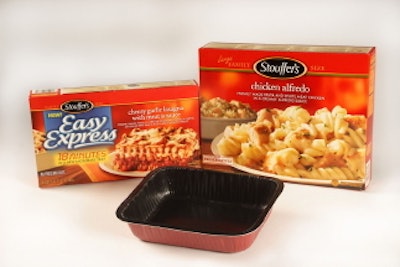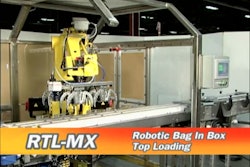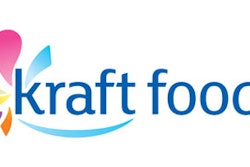
Nestlé Prepared Foods Company has announced that its Stouffer’s brand will adopt new paperboard packaging in its Stouffer’s Family and Large Family Size multiserve products, replacing plastic trays.
"Our company is always searching for efficiencies and ways to reduce our impact on the environment,” says company president CEO Angelo Iantosca. “One area we've explored is converting CPET, or plastic, trays to paperboard. We tested paperboard packaging with the launch of our three Stouffer’s Easy Express items earlier this year. Not only was the launch of the Easy Express line successful in delivering convenient, quality meals to moms in 20 minutes or less, but the tray material performed well, meeting our strict standards in the areas of product safety and quality. Based on that success, we've decided that we will use the paperboard tray across the Stouffer’s Family Size business."
Iantosca notes that this is not the first change in packaging the company has made. "We've been adapting tray and package sizes for several years,” he says. “In fact, we've challenged our team to explore new materials and innovative packaging solutions with the aim of becoming the category leader in efficient packaging."
The accumulated effect of these changes—made while still delivering a consistent, quality experience for consumers, Nestlé says—is significant. "For example, we've 'right-sized' the CPET trays we continue to use, and in doing so, were able to make a modest change to the corresponding carton size,” Iantosca says. “This in turn led to more efficient case and pallet configurations. The reductions in corrugate consumption, paperboard used in our cartons, CPET in our trays, and PET in the film covering totaled 2,754 tons per year.
"But our improvements did not just impact packaging consumption. Our packaging redesign, coupled with an initiative to optimize the number of cases we can fit onto a pallet, helped us reduce diesel fuel consumption by 206,443 gallons annually and wood pallet usage by 4.7 million pounds."
The Nestlé packaging team is focused on a strategy that emphasizes both product quality and package efficiency says Iantosca. "With all of our frozen brands—Stouffer’s, Lean Cuisine, Hot Pockets, and Lean Pockets—we focus on delivering the best taste for the consumer and an optimal package size for the freezer, whether it's the one at home or in retailer stores. By being thoughtful about how we meet both needs, we all benefit,” he concludes.























